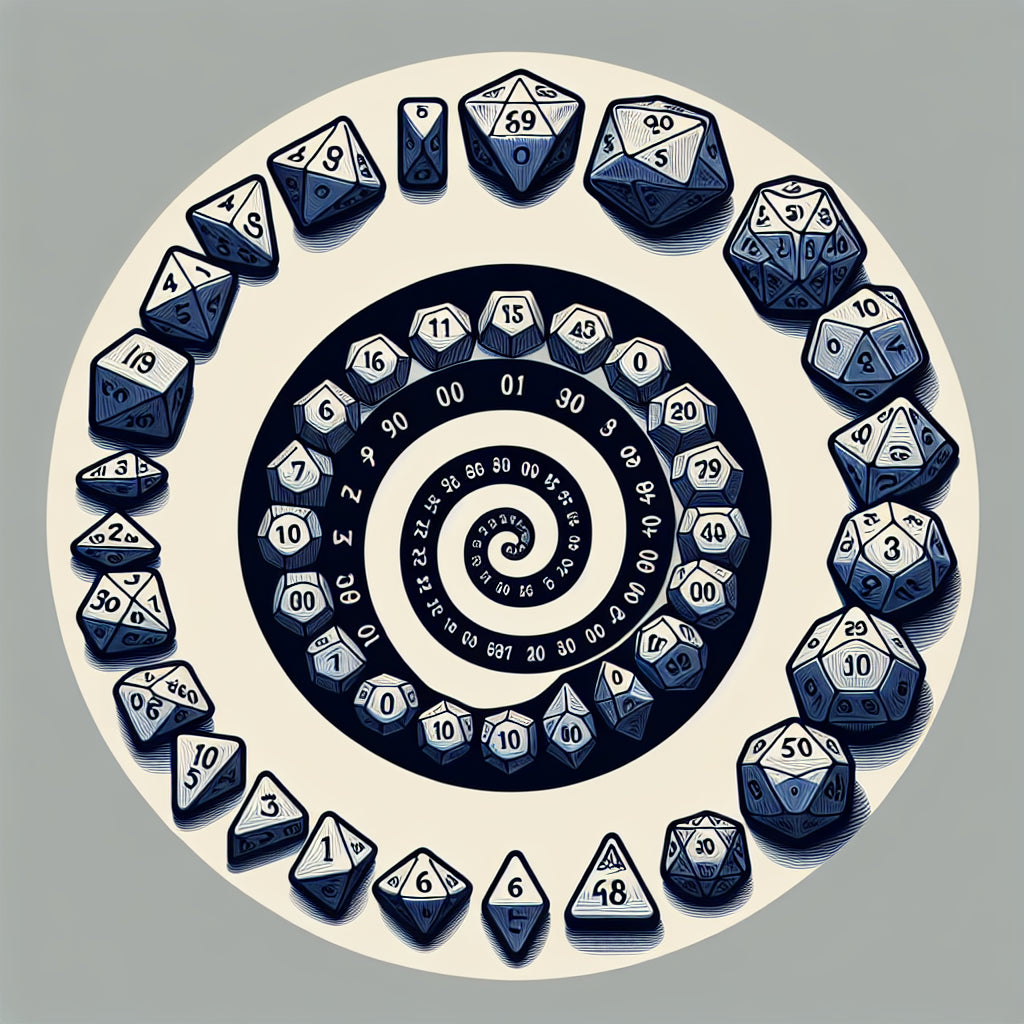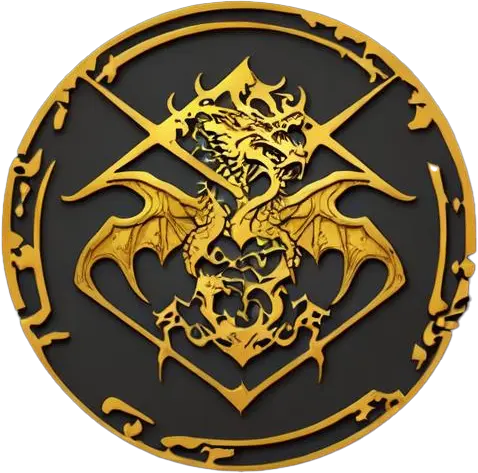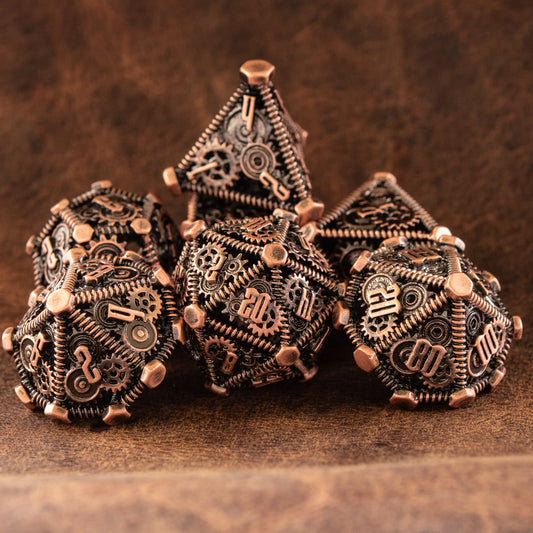
How Many Dice Are Used in Dungeons and Dragons?
Share
How Many Dice Are Used in Dungeons and Dragons?
Introduction
Dungeons & Dragons (D&D) is a game of imagination, strategy, and chance, where dice play a crucial role in determining the fate of characters. In this article, we will explore the different types of dice used in D&D, their purposes, and how many you need to enhance your gameplay experience.
Understanding the Different Types of D&D Dice
The Standard Set of D&D Dice
A standard D&D dice set includes seven polyhedral dice: d4, d6, d8, d10, d12, d20, and d%. Each die serves a unique purpose in the game, from determining damage to resolving skill checks. Knowing how many dice are used in Dungeons and Dragons can significantly improve your gameplay experience.
Detailed Overview of Each Die
- d4: Four-sided die used for smaller weapons and healing spells.
- d6: Six-sided die, familiar from other games, used for various abilities and spells.
- d8: Eight-sided die used for larger weapons and cantrips.
- d10: Ten-sided die, often used with d% for determining percentages.
- d12: Twelve-sided die used for massive weapons, typically wielded by barbarians.
- d20: Twenty-sided die, the most iconic, used for attack rolls, skill checks, and saving throws.
- d%: Percentile die used in combination with d10 to generate numbers from 1 to 100.
The Role of Dice in D&D Gameplay
Why Dice are Essential in D&D
Dice introduce an element of chance, adding excitement and unpredictability to the game. They determine the success or failure of actions, from combat to skill checks. This randomness is a core aspect of the game, making every session unique and thrilling.
How Dice Influence Game Mechanics
Different dice are used for different actions, such as attacking, defending, and casting spells. The outcome of dice rolls can significantly impact the narrative and progression of the game. For instance, a high roll on a d20 can mean a successful attack or a critical hit, while a low roll might result in a miss or failure. This dynamic keeps players engaged and invested in the story.
By understanding the various dice and their roles, players can better prepare for their adventures and make more strategic decisions. Whether you're a seasoned player or new to the game, knowing how many dice are used in Dungeons and Dragons and their specific purposes can enhance your overall experience.
How Many Dice Are Used in Dungeons and Dragons?
How Many Dice Do You Need for D&D?
Basic Dice Requirements
When embarking on your Dungeons & Dragons journey, the essential requirement is a set of seven dice: d4, d6, d8, d10, d%, d12, and d20. This basic set covers all fundamental game mechanics, ensuring you are well-prepared for a variety of scenarios.
- d4: Used for smaller weapons and healing spells.
- d6: Commonly used for abilities and spells.
- d8: Utilized for larger weapons and cantrips.
- d10: Paired with d% for determining percentages.
- d%: Works with d10 to generate numbers from 1 to 100.
- d12: Essential for massive weapons, typically wielded by barbarians.
- d20: The most iconic die, used for attack rolls, skill checks, and saving throws.
Additional Dice for Enhanced Gameplay
While a single set of dice is sufficient for basic gameplay, having multiple sets can significantly enhance your experience, particularly for spellcasters who often need to roll multiple dice simultaneously.
- Multiple d6s: Useful for spells like Fireball, which requires rolling several d6s at once.
- Extra d20s: Handy for situations involving advantage or disadvantage rolls, allowing for quicker and more efficient gameplay.
- Additional Sets: Having more than one set of each die can speed up gameplay and reduce downtime, especially during intense combat scenarios.
Choosing and Caring for Your D&D Dice
Factors to Consider When Choosing Dice
Selecting the right dice is crucial for both aesthetic pleasure and practical gameplay. Here are some key factors to consider:
- Material: Dice come in various materials, with metal and plastic being the most common. Metal dice are durable and have a satisfying weight, while plastic dice are lightweight and come in a wide range of colors and designs.
- Design: The aesthetic appeal of dice can enhance your gaming experience. Choose designs that resonate with your character or the theme of your campaign.
- Balance and Fairness: Ensuring your dice are well-balanced is essential for fair rolls. High-quality dice from reputable manufacturers are less likely to have imperfections that could affect the outcome of rolls.
Caring for Your Dice
Proper care and maintenance of your dice will ensure they remain in good condition and provide fair rolls throughout many gaming sessions.
- Storage: Store your dice in a protective case or bag to prevent damage. Avoid leaving them in direct sunlight or in places with extreme temperatures.
- Cleaning: Regularly clean your dice to maintain their appearance and performance. Use a soft cloth and mild soap to gently wipe them down, avoiding harsh chemicals that could damage the material.
Conclusion
Understanding how many dice are used in Dungeons and Dragons and selecting the right ones for your gameplay style can significantly enhance your experience. From the essential set of seven dice to additional sets for more complex scenarios, having the right tools at your disposal is key to enjoying this imaginative and strategic game.
Encourage your fellow adventurers to explore different dice sets and find the perfect ones that suit their gameplay preferences. By investing in high-quality dice and taking good care of them, you'll be well-equipped for countless thrilling adventures in the world of Dungeons & Dragons.
Whether you're a seasoned player or new to the game, the right set of dice can make all the difference. So, gather your dice, prepare your character sheet, and let the adventures begin!

